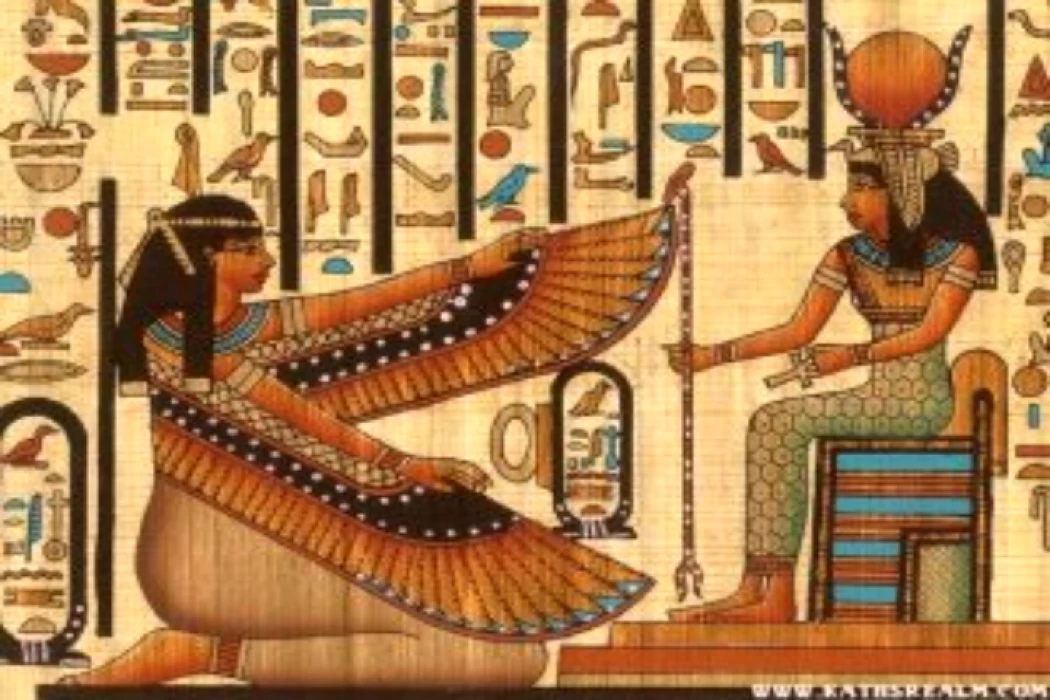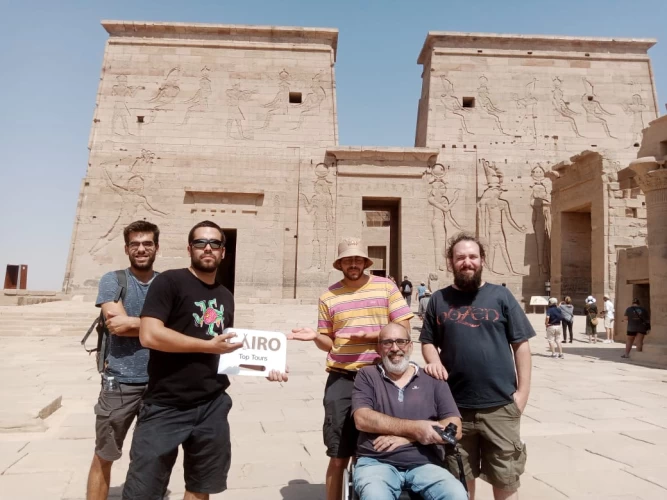
Dea Nekhbet | Dea egizia
Dea Nekhbet
Nekhbet era spesso raffigurata mentre dispiega le ali sul sovrano e afferra con l'artiglio l'immagine del cartiglio o altri emblemi. Il centro del culto di Nekhbet era El-Kāb, ma il suo epiteto principale la rendeva l'immortale di Hierakonpolis (o Nekhen), la città tradizionale di fronte a El-Kāb, sulla regione geografica del fiume Nilo.
Dea egizia
Nekhbet era la patrona della divisione amministrativa, mostrando l'unità delle "Due signore" all'interno del nome Nebty del sovrano (con la sua controparte Wadjet). Era tipicamente conosciuta come "Hedjet" (Corona Bianca) in relazione alla corona della divisione amministrativa e appare spesso come un dispositivo araldico che rappresenta la divisione amministrativa. Era anche la protettrice dei bambini reali e, in epoche successive, di tutti i bambini e delle madri in attesa.
È provato che Nekhbet era già presente nell'Egitto predinastico, ma era specificamente legata alla città di Nekheb (il suo nome significa proprio "colei di Nekheb"). Tuttavia, al momento della prima famiglia, Nekheb e Nekhen (centro di culto della divinità egizia il Vecchio) si erano incorporate e lei o lui e Wadjet furono combinati per formare il nome Nebty del faraone; la sua posizione come rappresentante della divisione amministrativa era assolutamente stabilita.
I riferimenti nei Testi delle Piramidi (della V dinastia) assicurano che Nekhbet era considerata una creatrice immortale con l'epiteto di "Padre dei padri, Madre delle madri, che esiste fin dall'inizio ed è creatrice di questo mondo". Era raffigurata sull'abito Nemes del re come un avvoltoio o un serpente e sull'abito dell'avvoltoio del quarto popolo come un'eccellente consorte reale.
Scoprite di più sugli dei e le dee dell'antico Egitto attraverso i tour di un giorno a Luxor, inoltre se potete salire sul treno per un paio d'ore a nord potete anche percorrerlo durante i tour di un giorno ad Assuan o anche il nostro tour di 2 giorni a Luxor da Assuan ci sono molti tour di un giorno in Egitto che vanno a Luxor dalle varie città egiziane come i tour di un giorno a Hurgada via terra a Luxor o se venite per una vacanza di piacere a Sharm potete prendere l'aereo per un giorno durante le escursioni a Sharm El Sheikh per esplorare tutta la città storica.
Prenotate ora per una grande esperienza di vacanze in Egitto e pacchetti vacanza in Egitto tour di un giorno a Luxor, tour di un giorno ad Assuan e tour di lusso in Egitto per godere del favoloso tour delle piramidi di Giza e della Sfinge, del tour del Museo Egizio, della Valle dei Re, del Cairo copto e islamico e del Tempio di Abu Simbel.
References within the Pyramid Texts (from the Fifth Dynasty) ensure that Nekhbet was thought-about to be a creator immortal with the epithet “Father of Fathers, Mother of Mothers, who has existed from the start, and is Creator of this World”. She was diagrammatical on the king’s Nemes clothing as a vulture or a snake and from the Fourth folk vulture clothing for an excellent royal spouse.
In ancient mythology, Nakhbet is considered a local goddess from the early pre-dynastic era. The goddess was called the patroness of the city of Nakhbet (Kaab), and she later became the patroness of Upper Egypt and was the second patroness of all of ancient Egypt when it was unified. In Egyptian religion, Nakhbet was seen by the people as the protector of all the rulers of Upper Egypt. Like a bird eagle the powerful goddess.
In ancient mythology, Nakhbet is considered a local goddess from the early pre-dynastic era. The goddess was called the patroness of the city of Nakhbet (Kaab), and she later became the patroness of Upper Egypt and was the second patroness of all of ancient Egypt when it was unified. In Egyptian religion, Nakhbet was seen by the people as the protector of all the rulers of Upper Egypt. Like a bird eagle the powerful goddess.
Nekhbet was often pictured as spreading her wings over the ruler while grasping in her claw the cartouch image or different emblems. She appeared as a girl, typically with a vulture’s head, sporting a white crown, and was generally delineated suckling the ruler. the middle of Nekhbet’s cult was El-Kāb, however, her principal epithet created her the immortal of Hierakonpolis (or Nekhen), the traditional city opposite El-Kāb, on the geographical region of the Nile River.
Nekhbet has been depicted since the beginning of the historical era in the form of a female vulture, which is still occasionally seen in Upper Egypt. She is usually depicted in profile or with wings spread in a straight pose, with only the head and feet depicted in profile. She is usually depicted holding the Sn sign in her talons, which signifies eternity or dominance. Nekhbet is identified with the goddess Wadjet, her counterpart in Lower Egypt, and thus Nekhbet is sometimes depicted as her serpent counterpart.
With Wadjet, she embodied one of the five royal titles, Nebty, meaning "the two ladies" or "belonging to the two ladies." Nekhbet also personified the crown of Upper Egypt. In human form, she may sometimes be depicted as a woman wearing a vulture-shaped headdress or crown, or she may wear the White Crown of Upper Egypt.
Nekhbet was the patron of administrative division, showing the unity of the “Two ladies” within the Nebty name of the ruler (with her counterpart Wadjet). She was typically known as “Hedjet” (White Crown) in relevance to the crown of the administrative division and frequently seems as a heraldic device representing the administrative division. She was conjointly a defender of royal kids and, in later periods, of all young kids and expectant mothers.
There is proof that Nekhbet was already standard in Predynastic Egypt however was specifically related to the city of Nekheb (her name truly means “she of Nekheb”). However, by the first family amount, Nekheb and Nekhen (cult center of Egyptian deity the Elder) had incorporated and she or he and Wadjet were combined to make the Nebty name of the pharaoh; her position as a representative of administrative division was absolutely established.
There was a huge cult cabin for Nakhbet at El Kab, although little remains of it. Since at least the Old Kingdom, Nakhbet has been characterized by the white crown of Upper Egypt, and was thus closely associated with the monarchy and the person of the king, so she was mythologically known as the "mother of the king." The pyramid texts depicted her as a mother goddess in the form of a large white cow. The pyramid texts depicted her as a matriarch in the form of a large white cow. In royal birth scenes, such as those found in the funerary temple of King Sahuros at Abu Sir, Nakhbet is represented as a nurturer or protective caretaker of the king.
There is proof that Nekhbet was already standard in Predynastic Egypt however was specifically related to the city of Nekheb (her name truly means “she of Nekheb”). However, by the first family amount, Nekheb and Nekhen (cult center of Egyptian deity the Elder) had incorporated and she or he and Wadjet were combined to make the Nebty name of the pharaoh; her position as a representative of administrative division was absolutely established.
Along with Wadjet, she embodied one of the five royal titles, Nebty, meaning "the two ladies" or "belonging to the two ladies." Nekhbet also personified the crown of Upper Egypt. In human form, she was sometimes depicted as a woman wearing a vulture-shaped headdress or crown, or she might wear the White Crown of Upper Egypt.
















